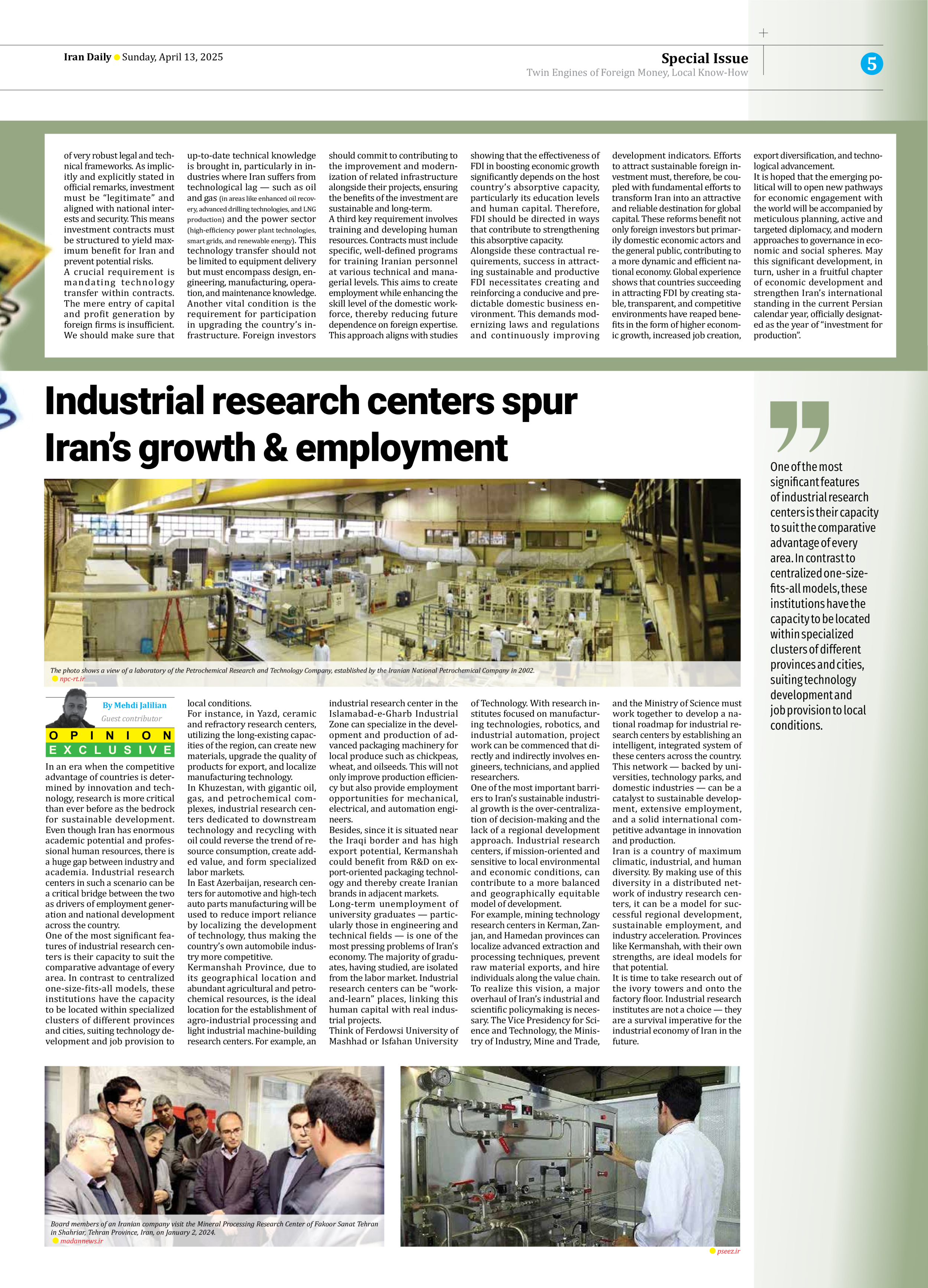
Industrial research centers spur Iran’s growth & employment
By Mehdi Jalilian
Guest contributor
In an era when the competitive advantage of countries is determined by innovation and technology, research is more critical than ever before as the bedrock for sustainable development. Even though Iran has enormous academic potential and professional human resources, there is a huge gap between industry and academia. Industrial research centers in such a scenario can be a critical bridge between the two as drivers of employment generation and national development across the country.
One of the most significant features of industrial research centers is their capacity to suit the comparative advantage of every area. In contrast to centralized one-size-fits-all models, these institutions have the capacity to be located within specialized clusters of different provinces and cities, suiting technology development and job provision to local conditions.
For instance, in Yazd, ceramic and refractory research centers, utilizing the long-existing capacities of the region, can create new materials, upgrade the quality of products for export, and localize manufacturing technology.
In Khuzestan, with gigantic oil, gas, and petrochemical complexes, industrial research centers dedicated to downstream technology and recycling with oil could reverse the trend of resource consumption, create added value, and form specialized labor markets.
In East Azerbaijan, research centers for automotive and high-tech auto parts manufacturing will be used to reduce import reliance by localizing the development of technology, thus making the country’s own automobile industry more competitive.
Kermanshah Province, due to its geographical location and abundant agricultural and petrochemical resources, is the ideal location for the establishment of agro-industrial processing and light industrial machine-building research centers. For example, an industrial research center in the Islamabad-e-Gharb Industrial Zone can specialize in the development and production of advanced packaging machinery for local produce such as chickpeas, wheat, and oilseeds. This will not only improve production efficiency but also provide employment opportunities for mechanical, electrical, and automation engineers.
Besides, since it is situated near the Iraqi border and has high export potential, Kermanshah could benefit from R&D on export-oriented packaging technology and thereby create Iranian brands in adjacent markets.
Long-term unemployment of university graduates — particularly those in engineering and technical fields — is one of the most pressing problems of Iran’s economy. The majority of graduates, having studied, are isolated from the labor market. Industrial research centers can be “work-and-learn” places, linking this human capital with real industrial projects.
Think of Ferdowsi University of Mashhad or Isfahan University of Technology. With research institutes focused on manufacturing technologies, robotics, and industrial automation, project work can be commenced that directly and indirectly involves engineers, technicians, and applied researchers.
One of the most important barriers to Iran’s sustainable industrial growth is the over-centralization of decision-making and the lack of a regional development approach. Industrial research centers, if mission-oriented and sensitive to local environmental and economic conditions, can contribute to a more balanced and geographically equitable model of development.
For example, mining technology research centers in Kerman, Zanjan, and Hamedan provinces can localize advanced extraction and processing techniques, prevent raw material exports, and hire individuals along the value chain.
To realize this vision, a major overhaul of Iran’s industrial and scientific policymaking is necessary. The Vice Presidency for Science and Technology, the Ministry of Industry, Mine and Trade, and the Ministry of Science must work together to develop a national roadmap for industrial research centers by establishing an intelligent, integrated system of these centers across the country.
This network — backed by universities, technology parks, and domestic industries — can be a catalyst to sustainable development, extensive employment, and a solid international competitive advantage in innovation and production.
Iran is a country of maximum climatic, industrial, and human diversity. By making use of this diversity in a distributed network of industry research centers, it can be a model for successful regional development, sustainable employment, and industry acceleration. Provinces like Kermanshah, with their own strengths, are ideal models for that potential.
It is time to take research out of the ivory towers and onto the factory floor. Industrial research institutes are not a choice — they are a survival imperative for the industrial economy of Iran in the future.







